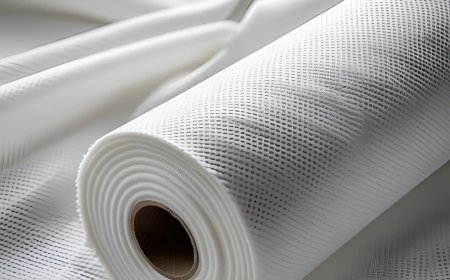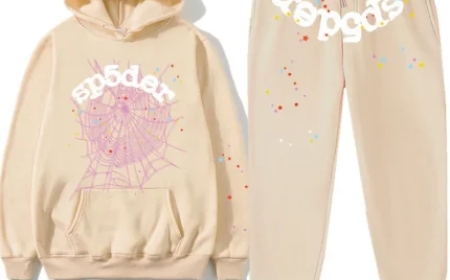How to Organize Your Essential Clothing Pieces

A well-organized wardrobe is a game-changer. It saves time, reduces stress, and helps you get dressed effortlessly every day. Organizing your essential clothing pieces the versatile items you rely on most ensures you maximize your wardrobes potential and maintain a streamlined, functional closet. Whether you have a Essentials Clothing minimalist capsule wardrobe or a larger collection, organizing essentials effectively is key.
Heres a comprehensive guide to help you organize your essential clothing pieces thoughtfully and efficiently.
1. Define Your Essential Clothing Pieces
Before diving into organization, clarify what counts as your essential clothing pieces. These are the foundational items you wear regularly and build your outfits around. Essentials often include:
-
Basic tees and tanks (neutral colors like white, black, grey, and navy)
-
Classic button-down shirts
-
Well-fitted jeans
-
Tailored trousers
-
A versatile blazer or jacket
-
Little black dress or staple dresses
-
Neutral sweaters or cardigans
-
Comfortable shoes like sneakers or flats
-
Outerwear like a trench coat or a denim jacket
Identifying these essentials helps you focus on organizing what truly matters daily.
2. Declutter First
Organizing starts with decluttering. Pull everything out of your closet and drawers. Sort items into categories:
-
Keep: Items that fit well, are in good condition, and you wear regularly
-
Donate/Sell: Clothes in good condition that you no longer want
-
Repair: Clothes needing mending or alterations
-
Discard: Worn-out, stained, or damaged beyond repair
Be honest about what you truly use. Keeping only your essentials and quality pieces will make organizing easier and your closet more functional.
3. Categorize and Group Clothing Pieces
Once youve decluttered, group your essentials by type. This might look like:
-
Tops: T-shirts, blouses, sweaters
-
Bottoms: Jeans, trousers, skirts
-
Outerwear: Jackets, blazers, coats
-
Dresses and jumpsuits
-
Shoes and accessories
Grouping by category helps you see what you have, identify gaps, and locate items quickly.
4. Choose the Right Storage Solutions
The storage method matters greatly in organizing essentials. Consider the following:
Hanging Storage
-
Use uniform hangers to create a neat, cohesive look.
-
Hang items that wrinkle easily, like button-down shirts, blouses, and trousers.
-
Organize hangers by category and color for example, from light to dark or casual to formal.
Folded Storage
-
Fold knitwear, t-shirts, and denim to avoid stretching or distortion.
-
Use shelves or drawers with dividers to keep folded items tidy.
-
Try vertical folding (Marie Kondo method) for drawers so items are visible at a glance.
Shoe Storage
-
Use clear boxes or a shoe rack to keep shoes organized and visible.
-
Store seasonal shoes separately if space is tight.
Accessories Storage
-
Use small trays, hooks, or drawer inserts for belts, scarves, and jewelry.
5. Maximize Closet Space with Smart Layouts
How you arrange your clothes within the closet impacts efficiency.
-
By Frequency of Use: Place everyday essentials at eye level for easy access. Reserve higher or lower shelves for less frequently used pieces.
-
By Season: If you live where seasons change drastically, store out-of-season clothes elsewhere to free up space.
-
By Outfit Types: Group workwear separately from casual clothes to streamline your dressing routine.
-
Use Vertical Space: Add extra shelves or hanging organizers to maximize vertical space.
6. Implement a Color-Coded System
Organizing by color not only looks visually appealing but also makes outfit coordination effortless. Arrange your essentials in a rainbow order or by shades whites, creams, neutrals, darks, and pops of color. This system helps you quickly spot items and mix-and-match.
7. Utilize Drawer Organizers and Dividers
Drawers can get messy fast. Use organizers and dividers to separate different essentials like socks, underwear, and workout gear. This prevents clutter and keeps everything in place.
8. Keep Your Wardrobe Functional and Flexible
-
Avoid overstuffing your closet this makes it hard to maintain organization.
-
Rotate seasonal items to keep the wardrobe fresh and uncluttered.
-
Consider a capsule wardrobe approach for maximum simplicity limit yourself to a set number of essentials that mix and match well.
9. Maintain Your Wardrobe Regularly
Organization is not a one-time project. Set a routine to:
-
Reassess and declutter every few months.
-
Re-fold or rehang clothes as needed.
-
Keep laundry habits consistent to avoid overflow.
This upkeep ensures your essentials remain accessible and tidy.
10. Tips for Special Situations
Small Closets
-
Use slim, space-saving hangers.
-
Hang multiple items on one hanger with cascading hooks.
-
Use under-bed storage for shoes or off-season clothes.
Shared Closets
-
Assign separate sections for each person.
-
Use labeled bins or baskets to keep personal items organized.
Limited Budget
-
Repurpose items like baskets or trays you already have.
-
Use tension rods or hooks to create extra hanging space.
Final Thoughts
Organizing your Essential Hoodie pieces isnt just about neatness its about making your daily life easier and your wardrobe more functional. When your essentials are easy to find and in good condition, getting dressed becomes a joy, not a chore.
Start by decluttering and defining what essentials truly serve your lifestyle. Invest in proper storage solutions, organize by category and color, and maintain your system with regular check-ins. With these strategies, your wardrobe will be a source of confidence and inspiration every day.








































